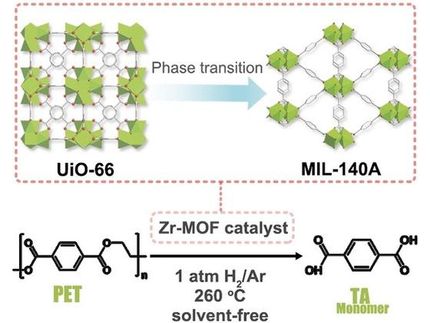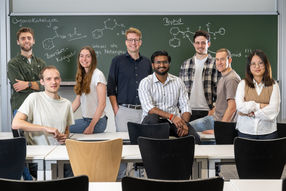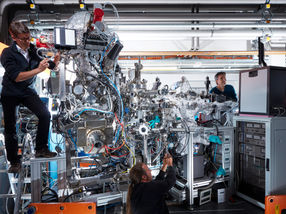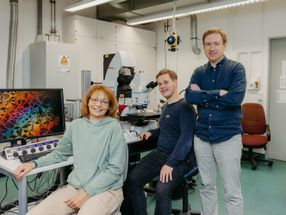Metal-organic Frameworks with Metallic Conductivity
Researchers produce MOF thin film with genuine metallic conductivity for the first time – prospects for the electronics of the future
Advertisement
Metal-organic frameworks (MOFs) are characterized by high porosity and a customizable structure. They have enormous potential, for example for applications in electronics. Until now, however, their low electrical conductivity has severely limited their use. With the help of AI- and robot-assisted synthesis in a self-controlled laboratory, researchers at the Karlsruhe Institute of Technology (KIT), together with colleagues in Germany and Brazil, have now succeeded in producing a MOF thin film that conducts electricity like metals. This opens up new possibilities in electronics and energy storage - from sensors and quantum materials to functional materials. The team reports in the journal Materials Horizons.
MOFs (metal-organic frameworks) consist of metallic junctions and organic struts. They can be used for catalysis, material separation and gas storage, among other things. Researchers at the Institute of Functional Interfaces (IFG) and the Institute of Nanotechnology (INT) at KIT as well as at the University of Göttingen, Freie Universität Berlin and the State University of São Paulo in Brazil have now achieved a decisive breakthrough: For the first time, they have produced a MOF in the form of a thin film that behaves like a metal and exhibits high conductivity.
New manufacturing process minimizes defects in MOFs
Metallic conductivity in MOFs has already been predicted in theory, but has only been realized in practice in exceptional cases - and never in the thin-film form that is crucial for technical applications. In this form, thin layers of MOF are applied to a substrate. "The reason for the low electrical conductivity is defects such as interfaces between crystal domains," explains Professor Christof Wöll, head of the IFG at KIT. "Such structural defects hinder electron transport. With our new manufacturing process, we have significantly reduced the density of these defects."
The international research team used AI- and robot-assisted synthesis in a self-controlled laboratory to optimize thin films of the MOF material Cu3(HHTP)2 . This approach enables precise control of crystallinity and domain size. As a result, it was possible to achieve conductivities of over 200 Siemens per meter in Cu3(HHTP)2 thin films at room temperature - and even higher at low temperatures of minus 173.15 degrees Celsius. This is a clear characteristic of metallic behavior that paves the way for the use of MOF thin films in electronic components.
Optimized MOF enables investigation of unusual transport phenomena
Theoretical studies also show that the MOF material Cu3(HHTP)2 exhibits Dirac cones - special electronic states that are also found in graphene, for example. "This opens up completely new possibilities for experimentally investigating unusual transport phenomena such as spin liquids, in which the quantum spins remain disordered even at low temperatures, or so-called Klein tunneling, i.e. the tunneling through barriers by very fast particles," says Wöll.
With their study, the researchers are therefore not only presenting a novel process for producing conductive MOF films for incorporation into electronic components. They are also opening up MOFs for many new fields of application. "The combination of automated synthesis, predictive material characterization and theoretical modelling opens up new perspectives for the use of MOFs in the electronics of the future - from sensor technology and quantum materials to tailor-made functional materials with specifically adjustable electronic properties," says Wöll.
Note: This article has been translated using a computer system without human intervention. LUMITOS offers these automatic translations to present a wider range of current news. Since this article has been translated with automatic translation, it is possible that it contains errors in vocabulary, syntax or grammar. The original article in German can be found here.
Original publication
Chatrawee Scheiger, Jonas F. Pöhls, Mersad Mostaghimi, Lena Pilz, Mariana Kozlowska, Yidong Liu, Lars Heinke, Carlos Cesar Bof Bufon, R. Thomas Weitz, Wolfgang Wenzel, Christof Wöll; "Dirac-cone induced metallic conductivity in Cu3(HHTP)2: high-quality MOF thin films fabricated via ML-driven robotic synthesis"; Materials Horizons, 2025































































